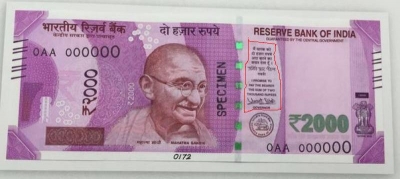
Even though the British left India in 1947, the coins they issued remained in use till 1950. The first coins made since then belonged to the ‘anna series’. They were traditional in design, and followed the metric system.
Introduced on August 15th, 1950, the coins of the anna series replaced the king’s portrait with the lion capital of the Asoka pillar. It represented peace and non-violence. The one rupee coins also had a sheaf of corn on one side. Sixteen annas together made a rupee.
The pillar and the corn images were among the many Indian motifs that appeared on the coins, post-independence.
The introduction of the ‘decimal series’ took place in September 1955, with the Indian Coinage Act. Thereafter, a rupee consisted of 100 paisas instead of annas or pice. You could say annas and pice were ‘demonetized’.
The naya paise were minted in the denominations of 1, 2, 5, 10, 20 and 50. In 1964, the word ‘naya’ was dropped.
Nickel, cupro nickel, bronze and nickel brass were the metals used in coins till 1963. Later, coins made of aluminium were used. Since 1992, coins were minted mostly in stainless steel.
All these coins came out in different shapes. While most of them were circular, some were also hexagonal, 8-scalloped, and square in shape.
In June 2011, all the coins in the denominations of 25ps were taken out of currency.
The country’s first bimetallic coin - of Rs 10 - was released in 2005 under theme of ‘unity in diversity’.

 By 1717, the British started to produce Mughal money at the Bombay Mint, with permission from the Mughal emperor Farrukhsiyar. The British gold coins were called ‘carolina’; ‘anglina’ was the silver coin, and ‘copperoon’, the copper coins. Tinnies were tin coins.
By 1717, the British started to produce Mughal money at the Bombay Mint, with permission from the Mughal emperor Farrukhsiyar. The British gold coins were called ‘carolina’; ‘anglina’ was the silver coin, and ‘copperoon’, the copper coins. Tinnies were tin coins.
 Commemorative coins are usually issued to pay respect to an important person, or to celebrate a special occasion.
Commemorative coins are usually issued to pay respect to an important person, or to celebrate a special occasion. You might know by now that the rupee is a currency used by many countries in the world, including Sri Lanka, Nepal, Pakistan, and the Maldives other than India. But do you know where the word ‘rupee’ came from?
You might know by now that the rupee is a currency used by many countries in the world, including Sri Lanka, Nepal, Pakistan, and the Maldives other than India. But do you know where the word ‘rupee’ came from? Over the years since its introduction, the Indian rupee has gone through significant changes. We saw that the rupee coin was first introduced by Sher Shah Suri. During his time, 40 copper coins amounted to a rupee. This was accepted by the Mughals as well.
Over the years since its introduction, the Indian rupee has gone through significant changes. We saw that the rupee coin was first introduced by Sher Shah Suri. During his time, 40 copper coins amounted to a rupee. This was accepted by the Mughals as well. We saw that the first bank note to be issued after the Independence was the one-rupee note with the symbol of the lion capital. Starting from 1951, inscriptions on notes were made in Hindi too.
We saw that the first bank note to be issued after the Independence was the one-rupee note with the symbol of the lion capital. Starting from 1951, inscriptions on notes were made in Hindi too.

 Star series notes, in its simplest definition, are replacement
Star series notes, in its simplest definition, are replacement  notes for errors in printing.
notes for errors in printing. There are many countries in the world that use the ‘rupee’ as their currency. This includes Indonesia, Mauritius, Nepal, Pakistan, Seychelles and Sri Lanka, apart from our own India.
There are many countries in the world that use the ‘rupee’ as their currency. This includes Indonesia, Mauritius, Nepal, Pakistan, Seychelles and Sri Lanka, apart from our own India.

 Ever noticed a small clause written on our banknotes? If you haven’t, take a close look at it. It is the promissory note, along with the signature of the RBI Governor.
Ever noticed a small clause written on our banknotes? If you haven’t, take a close look at it. It is the promissory note, along with the signature of the RBI Governor. The Reserve Bank of India was founded on April 1, 1935, constituted under the Reserve Bank of India Act 1934. It was a shareholder’s bank then, and remained so until its nationalization in 1949. It has been fully owned by the Indian government ever since.
The Reserve Bank of India was founded on April 1, 1935, constituted under the Reserve Bank of India Act 1934. It was a shareholder’s bank then, and remained so until its nationalization in 1949. It has been fully owned by the Indian government ever since.
 The Reserve Bank of India has the sole right to produce currency notes of all denominations in the country. Other than this, it has many other functions.
The Reserve Bank of India has the sole right to produce currency notes of all denominations in the country. Other than this, it has many other functions. Yes, it is the Reserve Bank of India that issues banknotes needed for the country. But have you ever wondered on what basis they issue the currency notes? Most certainly, on a demand-basis.
Yes, it is the Reserve Bank of India that issues banknotes needed for the country. But have you ever wondered on what basis they issue the currency notes? Most certainly, on a demand-basis. Broadly, the Indian banking sector can be divided into two types of banks- scheduled and non-scheduled.
Broadly, the Indian banking sector can be divided into two types of banks- scheduled and non-scheduled.